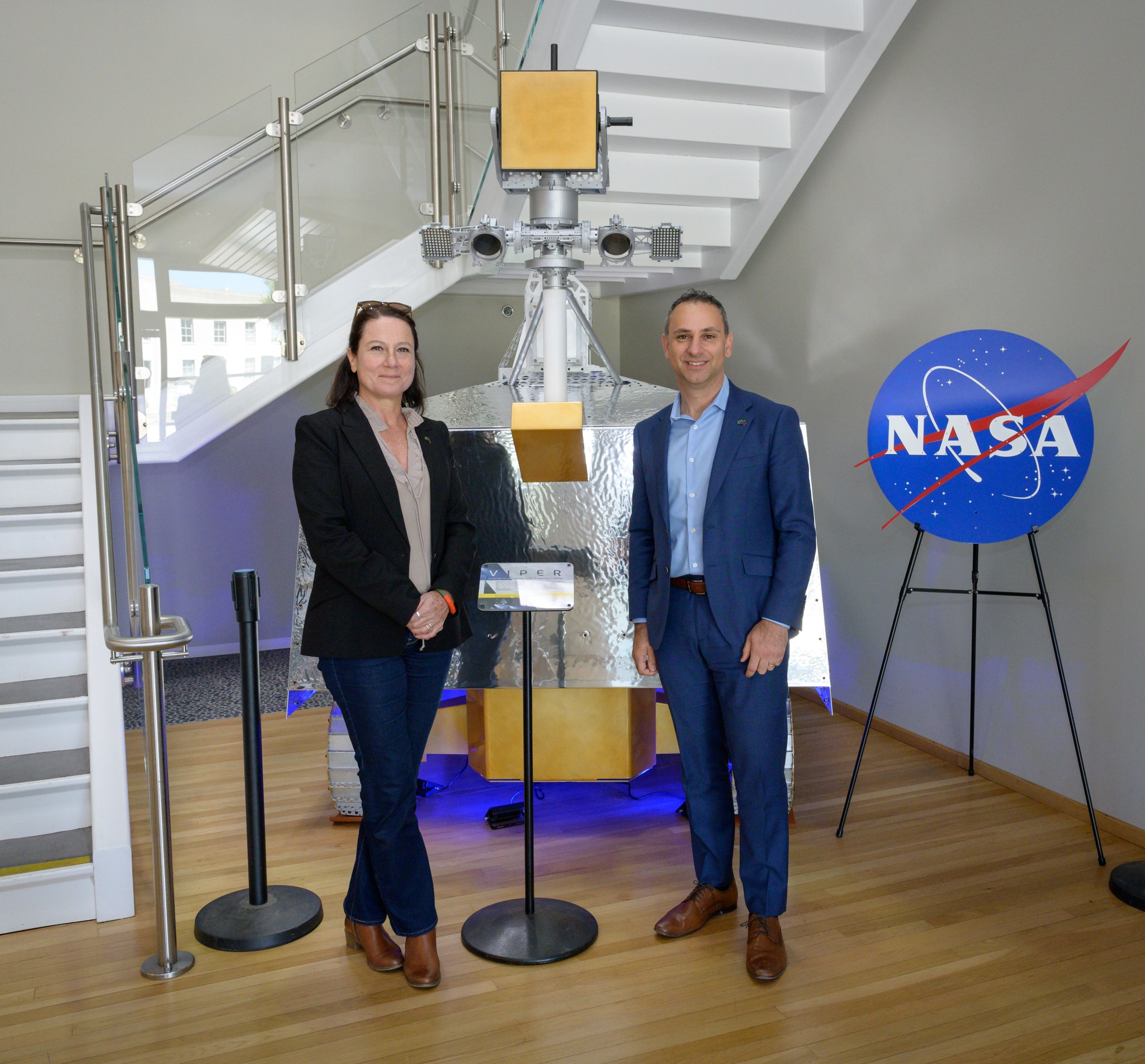Aude Vignelles, chief technology officer for the Australian Space Agency (ASA), and Enrico Palermo, head of the ASA, stand alongside a full-scale model of NASA’s Volatiles Investigating Polar Exploration Rover (VIPER) while visiting NASA’s Ames Research Center in California’s Silicon Valley on April 14, 2023.
Palermo and Vignelles learned about Ames-led missions supporting NASA’s Artemis program and Moon to Mars objectives, including VIPER, other robotic exploration technologies, and off-planet resource utilization tools. They also toured a few of Ames’ unique facilities that support missions to the Moon, Mars, and beyond, including the Multi Mission Operations Center, Open Mission Control Technologies laboratory, and the Unitary Plan Wind Tunnel.
VIPER will be delivered to Mons Mouton at the Moon’s South Pole in late-2024 to map and explore the characteristics of the lunar soil up-close, including the location of any water or other potential resources that could be used to sustain future human missions. The ASA is planning to send a small semi-autonomous rover to the Moon as soon as 2026 as part of its Trailblazer program under its Moon to Mars initiative. The ASA rover intends to collect lunar regolith from the Moon and deliver it to a NASA-operated system on a commercial lunar lander, which will attempt to extract oxygen from the sample – demonstrating our ability to generate products using local materials, a process known as in-situ resource utilization.
Australia is one of many nations that have signed the Artemis Accords, which describe a shared vision for principles, grounded in the Outer Space Treaty of 1967, to create a safe and transparent environment which facilitates exploration, science, and commercial activities for all of humanity to enjoy.
“We appreciate Australia as one of our strongest allies and partners as we return to the Moon and look deeper into our solar system to explore Mars,” said Eugene Tu, Ames center director. “From robotics to quantum computing, NASA Ames is proud of our partnership with the people of Australia and we look forward to all we will achieve together.”
Image credit: NASA Ames/Dominic Hart
Author: Rachel Hoover, NASA’s Ames Research Center



























